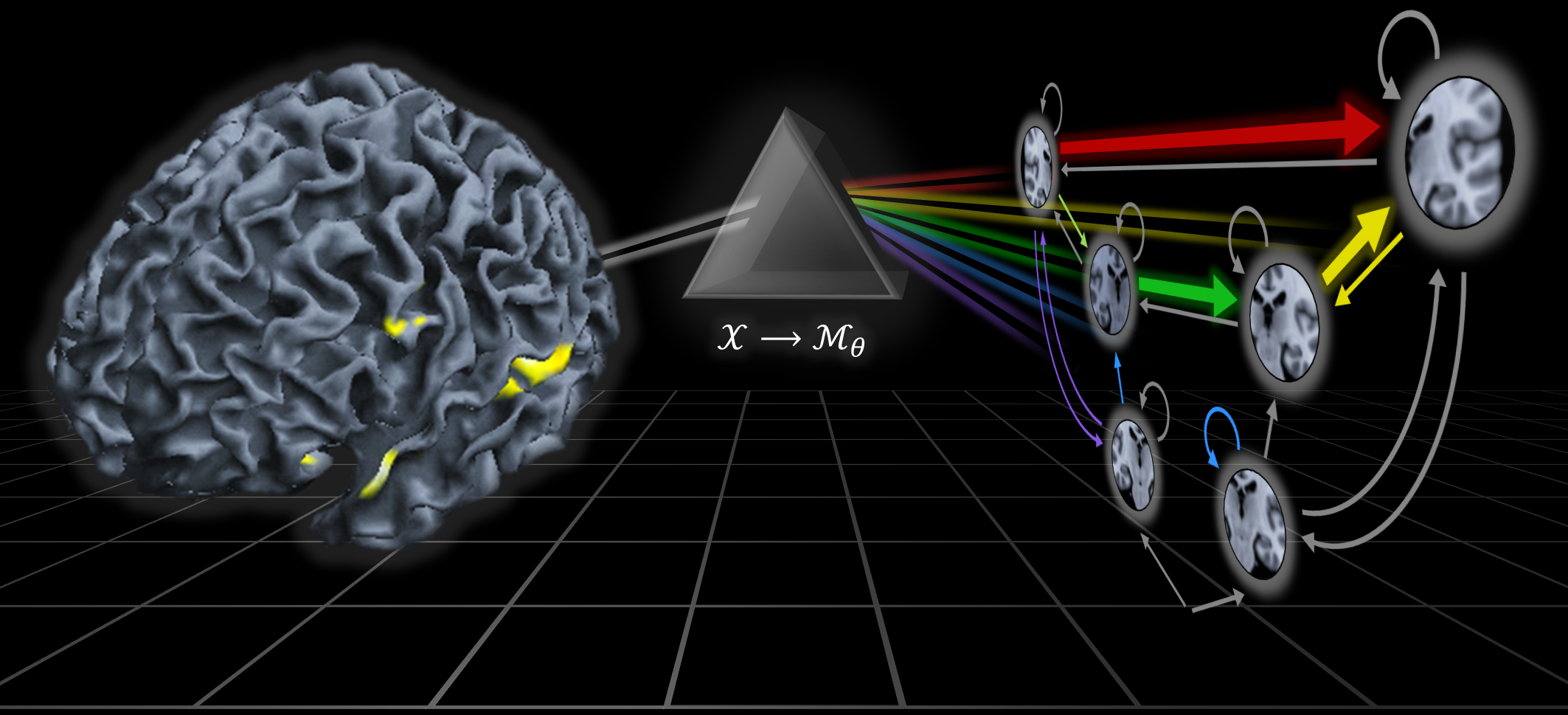Generative Embedding for Neuroimaging
Dynamic generative models of neuronal activity enable a biologically motivated, mechanistically interpretable view of the brain. These models can be viewed as optical prisms that transform high-dimensional fMRI data into low-dimensional patterns of connectivity. Such patterns can, for example, be used to understand the differences between the healthy and the diseased brain in a mechanistically interpretable fashion.

